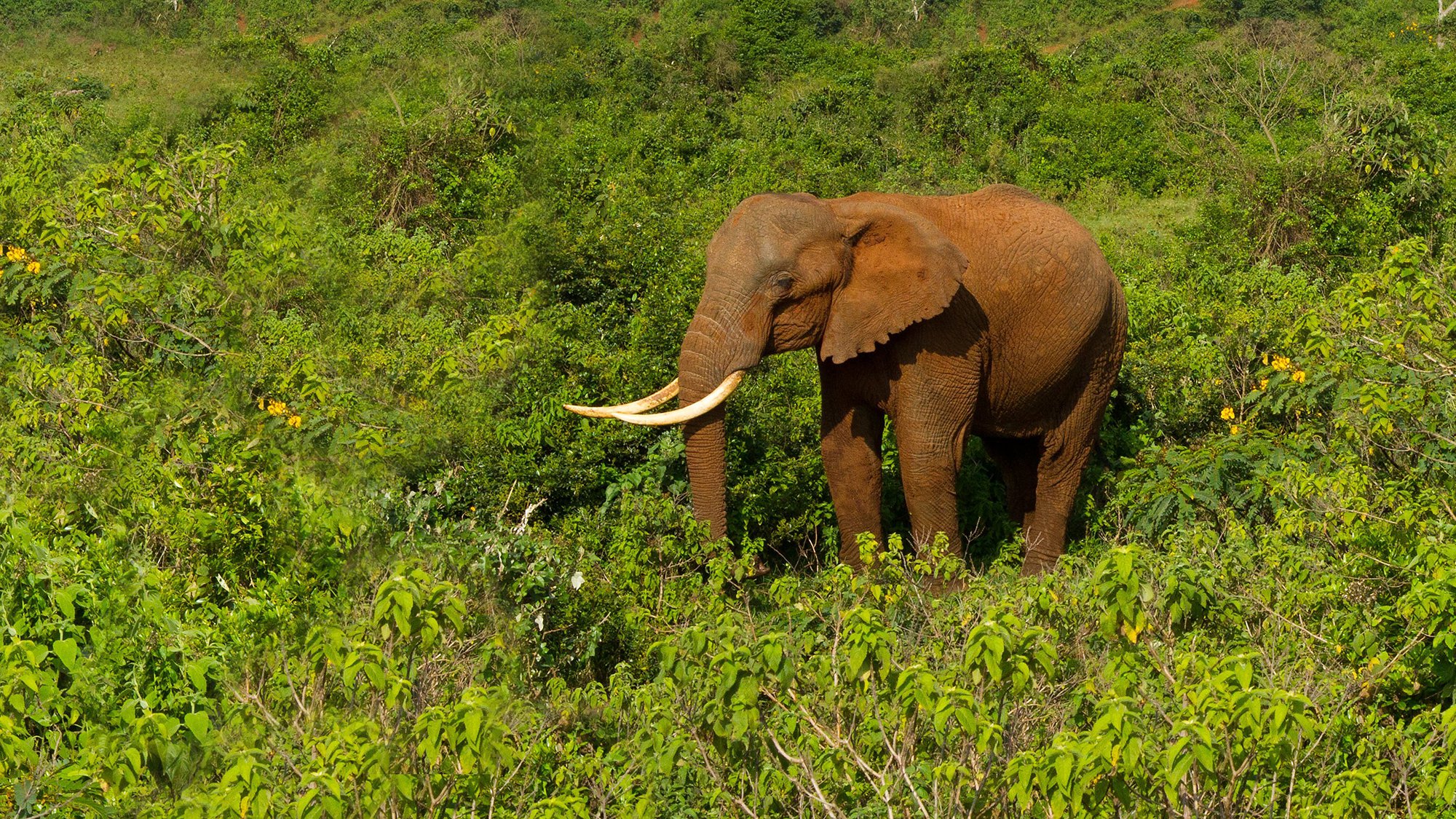There’s something truly humbling about standing in the presence of earth’s last remaining megafauna. Carnivores and herbivores alike, dominating the land and seas sometimes with terror, but always with grace. The tragic reality is that the majority of us will only get the in-the-flesh experience at a zoo, populations dwindle. From deforestation to climate change-induced desertification to poaching, we find ourselves at a critical time where our every move defines us as a species committed to either diversity or destruction.

It’s no secret that every organism in a given habitat fulfils a particular role or “niche.” That’s the beauty of evolution and it offers some hope if we’re to contemplate life after the Anthropocene (assuming the planet survives it, of course). The interconnectedness of these niches is rather complex; the effects of removing top predators and resulting trophic cascades is relatively well-documented, but what about the gentle vegetarian giants? You might be surprised to know that these might well be playing the most important role of all.
African forest elephants are the smallest of the three elephant species alive today. They are found in the lowland tropical rainforests of central and western Africa and forage in family groups of up to 20 individuals on seeds, leaves and bark. Unfortunately numbers have been reduced by over 60% since 2002 as a result of habitat loss and poaching and today they are thought to occupy less than a quarter of their potential habitat range. This is a huge problem, not just for the loss of a beloved species, but also because these elephants play a vital role in sequestering carbon from the atmosphere.
As it turns out, these elephants are somewhat picky when choosing what to chow down on for their next meal. They prefer to bulldoze and snack on fast-growing plant species, leaving the more dense, slow-growing flora in place. These species continue to sequester CO2, serving as important carbon sinks.
Aptly-named “forest gardeners” or “engineers” in a recent study, biologists at Saint Louis University demonstrated using a novel simulation that the forests do much better with the presence of these elephants. Their strategic disturbance of native vegetation boosts above ground biomass by 7%. That figure may not seem significant, but in financial terms that translates to roughly $43 billion! Furthermore, their presence is thought to have shaped the current profile of African rainforests in ways not seen in Central America or Asia. This suggests a knock-on effect for other animal and plant species if their absence becomes reality.
Charismatic and known to possess tremendous depth of feeling, forest elephants need our help. Here are some ways that you can further the cause from many thousands of miles away:
Dja Faunal in Cameroon is one of the best protected areas of African rainforest and a UNESCO World Heritage Site. Approximately 90% of the area remains undisturbed, allowing the 100+ animal species that call it home able to survive and thrive. Donations to UNESCO or the Central Africa World Heritage Initiative help to protect this land for generations to come.
The African Wildlife Foundation focuses on wildlife conservation, land preservation and community empowerment to help protect animals like forest elephants. Donations to AWF furthers critical research on these animals so that we are better equipped to help protect them. They also have a Canines for Conservation program that I find particularly glorious. Highly trained dogs are used to sniff out poachers and contraband. This has boosted the number of arrests and prosecutions made since the scheme was implemented.
If you’re searching for a gift for an elephant lover in your life, consider the WWF’s Back A Ranger or Adopt An Animal schemes. Or, support one of the many important projects funded by Save The Elephants—a charity committed to boosting education and innovative technology such as geo-fencing. Geo-fencing is an environmentally-friendly way of deterring elephants from trampling crops by using beehives that put them off and make them head in the other direction. This allows elephants and farmers to live side by side harmoniously.
It goes without saying that supporting the ivory trade is a no-no, but if you’re traveling to tropical Africa, consider the wider impacts of your tourism beyond only this. Are your choices helping or hindering local communities? How could you make a more ethical choice via your consumption habits? Be mindful, be aware and be a part of the solution in protecting these climate change warriors so they can do their job and create a better world for us all.
How can you help African forest elephants today?
Also by Kat: Social Media Manipulation Is Threatening Democracy. How You Can Educate Yourself
This BioSolar Leaf Turns CO2 To O2, Produces Edible Protein & Gives Hope For The Climate Crisis
Get more like this—Sign up for our daily inspirational newsletter for exclusive content!
__
Photo: ZSL




